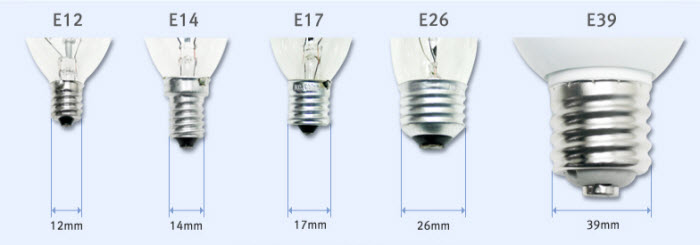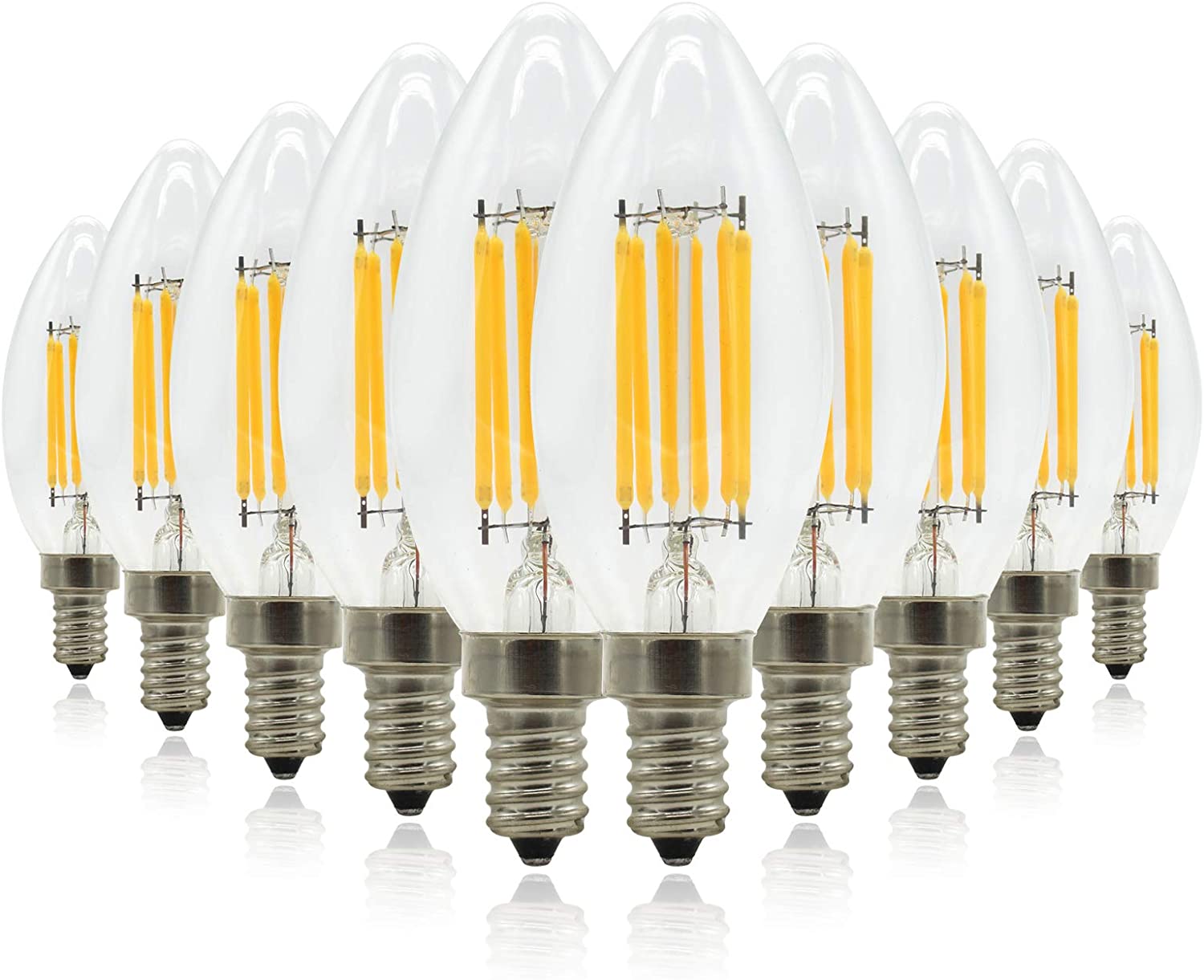What is the light bulb base size?
The base size of a bulb is the diameter of the threaded part of the bulb. There are several different sizes of bases, so it's important to make sure you get the right replacement bulb for your light fixture.
The most common base size is E26, which is used in most household light fixtures. Other common sizes are E27 and E12. If you're not sure what size your fixture takes, you can usually find the information on the fixture itself or on the light bulb packaging.
It's also important to note that not all bulbs have a base. Some LED and halogen bulbs have a built-in transformer that plugs directly into the socket. So if you're replacing one of these types of bulbs, you're looking for a replacement light fixture.
Another size to be aware of is M25, which is used in many Christmas lights. Many consumers have been baffled when they realize that the new LED bulb doesn't fit their old lights! The reason for this is that older Christmas lights typically have a larger base. So if you want to replace your standard bulbs with LEDs, make sure you get bulbs with an E26 or E27 base.
Is there any way around bulb base specifications?
You have to know whether your bulb is a screw-type or a bayonet type.
Some fixtures use a screw-in bulb, meaning that you twist the bulb into the socket to lock it in place. These bulbs typically have a base size of E26 or E27. Other fixtures use a bayonet bulb, which is inserted into the socket by pushing and turning it at the same time. Bayonet bulbs typically have a base size of M25.

If you're not sure what type of fixture you have, you can try unscrewing the light bulb to see if there's a different style of socket underneath. If so, you can look up the appropriate base size for that type of fixture. Or you could just buy an adapter to any bulb fit any socket.
These adapters let you choose from among several different base sizes. So even if you have a screw-in fixture, but the wrong kind of bulb for it, you can just buy an adapter and use the bayonet type without having to install a new light socket.
Maybe it's time to replace your fixtures? It might be easier than trying to find the right types of bulbs all the time.
Different bulb types and their standard base sizes
There are three primary types of light bulbs: incandescent, LED, and CFL. Each type has a variety of base sizes to fit different fixtures.
Standard incandescent light bulbs have a medium E26 base. This size is also used for some LED and CFL bulbs. If you're looking for a bulb with a large E27 base, you'll need an incandescent bulb. LED light bulbs typically have a smaller E12 or E14 base, while CFLs usually have an E26 base. There are some exceptions to this rule, so be sure to check the specifications of the bulb you're buying.
Knowing the base size of your light fixture is essential when shopping for a new bulb. Luckily, base sizes are standardized across all bulb types.
Do fittings have different bases?
There are three types of fittings: bayonet, screw, and Edison. The bayonet is the most common in the UK, with screw style becoming more popular. Edison fittings are used in North America and parts of South America.
Each fitting takes a different type of base: bayonet takes around MES base, screw takes a threaded ES/E26/27 base, Edison takes a square E12 base.
Therefore, in order to buy the correct bulb for your light fitting, you need to know both the fitting type and the country that it is from. If you don't know the country of your light fitting, try unscrewing the bulb - if it has a different style of socket underneath then it is probably from a different country.
Standard bulb base sizes chart for each type of bulb:
- Screw-in bulb: E26 or E27
- Bayonet bulb: MES
- Edison screw: E12
- Candelabra base: E11
If you're not sure what size your light fitting takes, try looking for the information on the fixture itself or on the light bulb packaging. You could also try unscrewing the light bulb to see if there's a different style of socket underneath. If so, you can look up the appropriate base size for that type of fixture.

Or you could just buy an adapter to any bulb fit any socket. These adapters let you choose from among several different base sizes. So even if you have a screw-in fixture, but the wrong kind of bulb for it, you can just buy an adapter and use the bayonet type without having to install a new light socket.
What if the bulb base size is wrong?
If the base size is wrong - e.g., you have a bayonet fitting but are using a screw style bulb, or vice versa - then it won't fit properly into the socket and might not work at all. This incorrect fitting could lead to overheating of the bulb (causing burnout) or damage to your lighting fixture (if it's an expensive one).
However, if this has happened, don't worry! Your light bulbs should still be under warranty for some time, depending on where you bought them from. You can either replace them free of charge or get your money back by returning them to the shop you bought them from (make sure they're in pristine condition first!).
Does the light bulb base size affect voltage?
No, the light bulb size does not affect voltage. The voltage is determined by the transformer in the fixture. So even if you replace an old incandescent bulb with a new LED one, the voltage will still be the same. It might just take a different amount of time for the LED to reach its full brightness.
If you're unsure about what type of transformer your fixture has, there are usually markings on the side or back of the transformer that will indicate the voltage. So if you're ever in doubt, you can always check!
Does the light bulb base size affect performance?
It depends on the type of light bulb. Some light bulbs, like CFLs or LEDs, are designed to be energy-efficient and last a long time. So even if you get a light bulb that's a different size than the one you have now, it might still perform just as well (or even better).
However, other types of light bulbs - like incandescents - are not as energy-efficient and might not last as long. So if you're looking to replace your old incandescent bulbs with new LEDs, make sure you get the right size!

Any effect on the electricity economy?
Replacing traditional light bulbs with more efficient light bulbs, like CFLs or LEDs, can have a big impact on the electricity economy. For example, if everyone in the United States replaced one traditional 60-watt light bulb with a CFL, it would save enough energy to power 3 million homes for a year!
So if you're looking to do your part to help conserve energy and save money on your electric bill, consider replacing some of your traditional light bulbs with more efficient ones. Just make sure you get the right size!
Conclusion
Light bulb base sizes can vary depending on the country of origin. The most common type of light bulb base is the E26 or E27, followed by the MES, Edison screw, and Candelabra base. If you're not sure what size your light fitting takes, try looking for the information on the fixture itself or on the light bulb packaging. You could also try unscrewing the light bulb to see if there's a different style of socket underneath.
If so, you can look up the appropriate base size for that type of fixture. Or you could just buy an adapter to any bulb fit any socket. These adapters let you choose from among several different base sizes. So even if you have a screw-in fixture, but the wrong kind of bulb for it, you can just buy an adapter and use the bayonet type without having to install a new light socket.
There's also no harm in either sticking with or upgrading your current lighting fixture if all else fails. So whether you're looking to upgrade your lighting fixtures by adding more efficient bulbs or just want to know what base size everything is, there are plenty of ways to find out. Good luck!